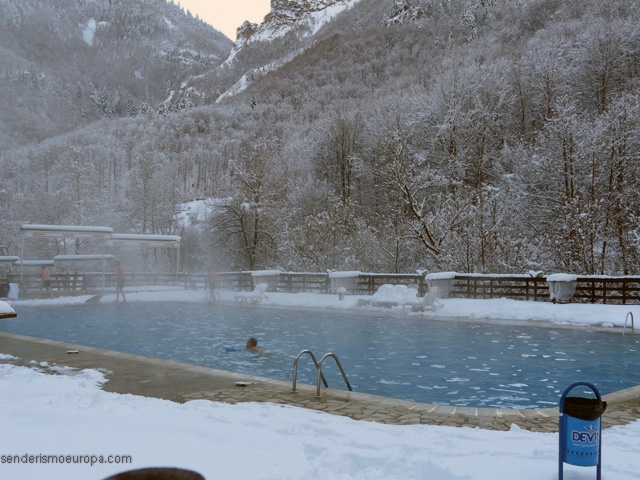Health and wellness tourism between mountains
Health and Wellness Tourism in the mountains of Bulgaria:
Summary of contents of this page:
from ancient times to the present day…
Brief History of Balneology in Bulgaria.
From the remote past, mineral water and mud have been used in Bulgaria for therapeutic purposes in balneotherapies. A series of archaeological finds testify to the development of hydrotherapy in present-day Bulgarian lands. The ancients Thracians (ancestors of present-day Bulgarians) they deified the running waters; the ancient greeks built “nymphaeums” , which are monuments in honor of nymphs around mineral water sources, and there they performed religious and healing rituals.
During the Roman Empire, settlements were built around mineral springs and mud fields, that became health centers, sport, cultural and administrative centers, used by soldiers for rest, therapeutic treatment and entertainment. A series of archaeological finds and ancient chronicles provide evidence of the existence of these balneological centers in Hisarya, Kyustendil, Sandanski, Varshets y Varna, and its tradition in the therapeutic use of water and mud continues to this day. The city of Hisarya, known in ancient times as the “city of emperors” or Diocletianopolis, named after the Roman Emperor Diocletian, and became one of the largest health recovery centers in the Roman Empire, due to the healing power of its mineral waters. Today, Hisarya is one of the most visited cities in the country for health and wellness tourism.
In this city well-preserved archaeological remains of Roman walls and parts of the Roman baths are kept that are worth seeing. Next to the current city of Kyustendil was built el major “asclepieion” (in greek: “healing temple”) from all the Balkans, it was a "healing temple" consecrated to the god Asclepius, god of medicine and healing, occupied more than 3.600 m2, was built there for its hot healing mineral waters, the climate and its mud and that today continues to contribute its properties to visitors. The tradition of using healing mineral waters was kept alive during the Ottoman Empire, when a large number of mineral water baths were built, some of them still in use.
At the end of the 19th century and the beginning of the 20th century, thermalism in Bulgaria made significant progress. Many modern bathrooms were built throughout the country, knowledge and technology were collected in Western Europe and balneology and spas became a science.
Today, the combination of the abundance of natural resources, the scientific experience of many years, new technologies and the application of European best practices has made Bulgaria a leading country in the development of health and wellness tourism in Europe.
During the last decade, large investments have been made in numerous hotel complexes with SPA centers, wellness and health treatments. These developments are based on domestic and foreign tourists coming mainly from Russia, Scandinavia, the United Kingdom, Israel, Cyprus and Greece. For the past eight years, Net sales of spa and hydrotherapy services have been constantly growing and health and wellness tourism in Bulgaria currently ranks second in popularity after beach tourism. The reasons for this upward trend are that thermal mineral water and mud treatments can be enjoyed all year round taking advantage of the healthy climate and conditions that Bulgaria offers..
Special features of Bulgarian hot springs.
Bulgaria is one of the best countries in the world in terms of mineral water resources and offers a wide variety of mineral waters, as well as fields of healing mud. In its territory there are more than 600 active mineral water sources with a flow of more than 5.000 liters / seg. Most of the mineral water stations are located in areas of high ecological and landscape value, within natural parks such as the majestic Rhodope Mountains, Pirin y Rila, also in the vicinity of the ski resorts of Bansko and Borovets, or on the Black Sea coast, or in the beautiful Valley of the Roses, or along the Struma and Mesta rivers, near Sofia the capital, that is to say, practically all over the country.
An important characteristic of Bulgarian mineral waters is that they originate deep underground, which allows their physical and chemical composition to be kept constant and protects them from the influence of human-generated pollutants and weather conditions..
They are very diverse waters in terms of mineralization composition, physics and chemistry, as well as temperature. There are mineral water springs in the country with temperatures below 20 ºC , for example, 12 ºC in the village of Voneshta Voda, Veliko Tarnovo region. At the same time, the only geyser in the Balkans is found in southwestern Bulgaria, in the city of Sapareva Banya, and reaches a water temperature of 103 ºC. In this 3D video you can see how your water flows under pressure:
Hot springs with temperatures above 37 ºC , followed by mineral waters with temperature between 20 and 37 ºC. Regarding mineralization, in Bulgaria you can find all groups of mineral waters, from the least mineralized of the Balkans and across Europe – for example, in the Sofia district, in the town of Knyazhevo (122 mg / liter), to the water of the town of Mirovo, Varna region with very high mineralization of 318,243 g / liter. And on average more than 80% of mineral waters in Bulgaria are with general mineralization of up to 1 g / liter, most of them with mineralization below 0,5 g / l. They are waters of good taste, clear, with excellent organoleptic qualities. The group of low mineralization waters includes waters that contain mainly radon, sulfide, silica and fluorine. Sodium anions, potassium and calcium cations, as well as hydrocarbons, sulfate and chlorine are common in these waters. Some of them also contain carbon dioxide CO2. Bulgarian mineral waters are rich in biologically active substances, such as fluorine and metasilicic acid in colloidal state. They are widely used for prevention and health treatments, to drink, in external balneological treatments and inhalations, for prophylaxis and for rehabilitation. There is a lot of research on the effectiveness of waters of low mineralization in the human body. Drinking this type of water regulates the function of the gastrointestinal tract, the liver, gallbladder and kidneys. Due to its low mineralization, have hypotonic effect, which increases diuresis. Metasilicic acid acts as a balm on the mucous membrane, protecting you from harmful influences. The external application of mineral waters is effective for the prophylaxis and treatment of diseases of the peripheral nervous system., musculoskeletal system and skin problems.
For his part, mineral waters with mineralization of 1,5 a 5 g / liter contain hydrocarbon, sulfate, sales… and have a marked healing effect. They are given in specific doses as prescribed by a doctor. Drinking this water has a proven curative effect for patients with gastrointestinal diseases., liver diseases, gallbladder and bladder disorders, diabetes, obesity and gout. They also reduce the hyperacidity of gastric juice; have a choleretic effect and are protective of the liver. External balneotherapy with this type of water is effective in patients with arthritis, peripheral nervous system disorders, gynecological and andrological diseases, skin problems, etc.
Climate therapy in combination with balneotherapy.
Bulgaria's specific climate also facilitates the development of tourism throughout the year. Climate therapy or climatotherapy in cases of allergic and chronic diseases of the upper and lower respiratory tract is widespread in Bulgaria. The combination of climate and mineral water in healthy inhalations is successfully applied for the prophylaxis and treatment of lung diseases and bronchial asthma. Velingrad and Sandanski are the resorts best known for their healing climate and most experienced in climate therapy. Sandanski health center, with its unique climate and air rich in negative ions it is famous for being the best natural clinic in Europe for bronchial asthma. Other popular Bulgarian weather stations are Albena, Pomorie, Hisarya, Varshets, Devin, Catherine, Kyustendil and Shipkovo.
Classical balneotherapy in Bulgaria has been performed mainly in rehabilitation hospitals. Nevertheless, during the last 10 years, medical SPA programs, for prevention and health promotion, as well as for the rehabilitation they have been widely applied in the new four and five star hotels recently built, combining modernity with the centuries-old knowledge of balneotherapy passed down for generations.
In future articles we will also discuss the possibilities of Bulgaria for specialized medical treatments, like cosmetic surgery, dentistry and in vitro fertilization…
If you want to make a different trip that combines health and wellness tourism with authentic rural tourism, Bulgaria is your destination to discover. Discover for example our proposal here although we can also make a trip to suit you: SPA getaway to Bulgaria.

















Send a reply